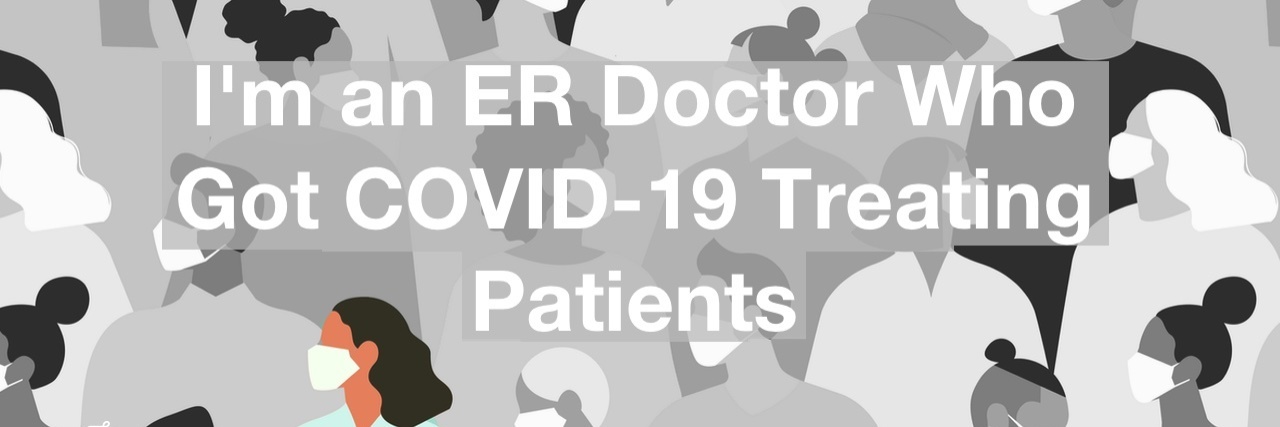Coronavirus Chronicles is a new series from The Mighty sharing the human stories behind the pandemic. In our second installation, Sana Maheshwari, M.D., a 31-year-old emergency medicine resident physician in New York City, shares her experience with COVID-19.

Sunday night I worked the last of a string of shifts in the COVID respiratory unit. I felt more tired than usual that night but didn’t think much of it apart from the fact that the burden of the week had finally got to me. My symptoms developed the next morning when I woke up with body aches and a pounding generalized headache. I later checked my temperature and found that I had a fever.
Two days after symptom onset, I developed a dry cough as well as a few loose bowel movements and nausea. The gastrointestinal symptoms resolved within a day. I lost my sense of taste on day three, weirdly I can still smell. My fevers and persistent headache stopped around day four but today I developed shortness of breath. I’ve been extremely tired and fatigued since the first day my symptoms appeared.
For the first few days, my headache was so strong that I wasn’t able to do anything. Now that I don’t have a headache, I feel better because I’m able to do things, even if it is just watching a movie. However, I tried to Swiffer my apartment this afternoon and had to stop because I became short of breath.
I was taking Tylenol when I had a fever and a headache. I’ve also been hydrating as much as I can. Some friends dropped off Gatorade and electrolyte packets, which have been very helpful! I’m also consciously taking deep breaths and doing a few stretching exercises daily to help keep my lungs open to prevent atelectasis (collapse of the tiny air sacs, alveoli, in the lungs).

Thankfully, it was easy for me to get tested. I got tested on the first day of symptoms. As a healthcare provider, the hospital needs to know who has tested positive and more importantly uses this information to determine when you can go back to work.
I went to the NYU Langone Hospital Annex. It was a surprisingly seamless process, I was actually pretty impressed! Having done the test on countless patients before, I have a new appreciation for when a patient grabs my hand when they feel like the swab has gone in too far. The test took all of 30 seconds but was definitely uncomfortable, it felt like a burning sensation in my nose.
For me, getting COVID-19 was inevitable. As a healthcare provider, the risk of me contracting COVID-19 is exponentially higher than the general population. When the doctor becomes the patient, what happens next? As more of my colleagues get sick, I am concerned that our efforts may not be sustainable in the months to come unless changes are made with a centralized federal response.
The first thought was that I’d be out from work for the next week or so when we’re already stretched so thin in the hospitals. The second thought was of the person my age the day prior that was gasping for air. The third thought was how I was going to keep my family from trying to come and take care of me as I did not want to risk exposing them to this in any way.

I think a huge misconception is that this invisible particle only targets the elderly or those with underlying medical conditions. Yes, they are at greater risk for complications, but I’ve seen my share of previously healthy young patients that are now upstairs in the hospital on a ventilator. I understand that it is hard to grasp when you’re not seeing it every day and are trying to fight something that doesn’t have a face, but I am so grateful to those who are diligently socially distancing themselves for the greater good.
This virus presents in so many different ways, with symptoms popping up later. I worry about the “walking well” who return later in respiratory distress. I sometimes wonder, usually at 2 AM when I can’t fall asleep, if will I be that person.
It is hard to keep up with all the data when you have sick patients rolling in. Information, protocols, research, treatments are changing daily, sometimes hourly. When it comes to COVID-19 what was best practice yesterday, could change tomorrow. I’m using this time to catch up on reading and up to date practices so that when I am on the other side of this, I’m ready to go back to the trenches.
Concerned about coronavirus? Stay informed with these articles:

